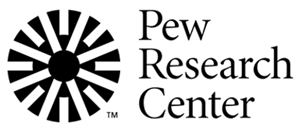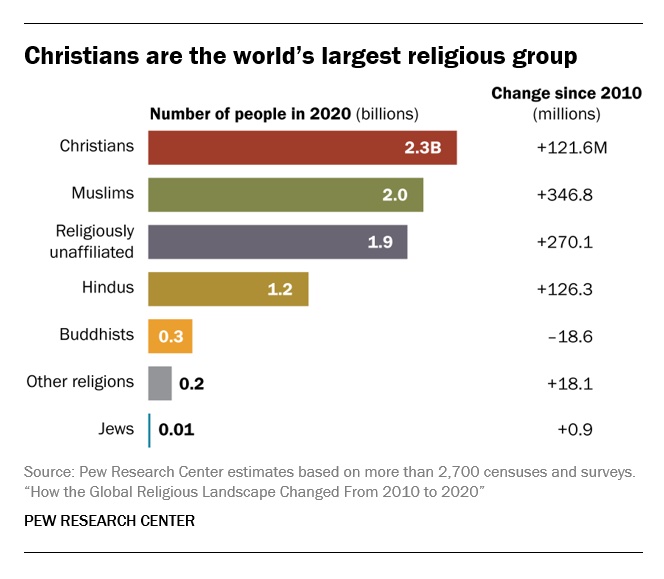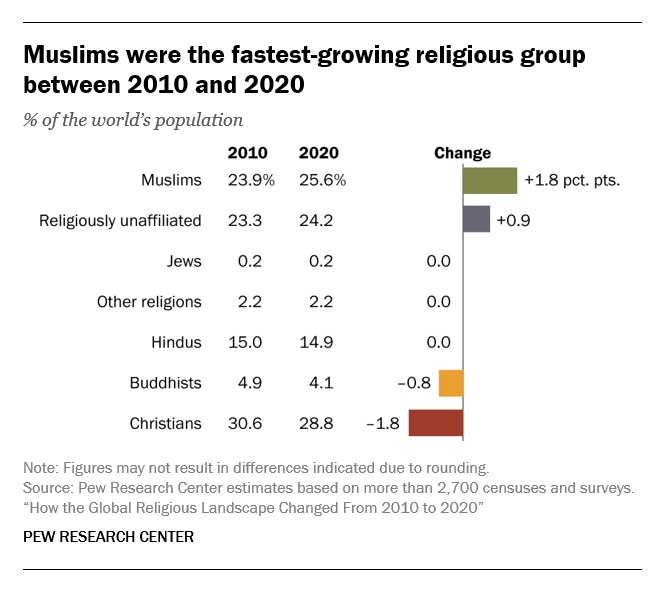Uncategorized
Aline Kominsky-Crumb, who transformed comics first as a muse and then as a feminist artist, dies at 74
(JTA) — Robert Crumb put the “x” in comix by setting to paper his basest sexual longings, including strong-legged Jewish women who were cowgirls and who went by the name Honeybunch Kaminski.
So when an actual strong-legged Jewish cowgirl named Aline Kominsky walked into his life, it was love at first sight, and never wavered.
Aline Kominsky-Crumb, who died Wednesday at 74 in France of pancreatic cancer, was late to the revolution her husband launched in comics a few years before they met, with his Zap Comix. The “x” was a signifier of what was then known as “underground” comics and referred to the unfiltered treatment of humanity that censorious publishers, politicians and public figures had all but washed out of the art.
She soon fully embraced the art form and then helped transform it.
Working with her husband and then on her own, Kominsky-Crumb brought to comics raw self-lacerating accountability and subverted crude stereotypes about Jewish women — including those peddled by her husband — by taking possession of them.
She started out as a self-acknowledged sex object reviled by second-wave feminists and became a hero of younger feminists for modeling unfettered sexual expression. She was the brassy Jewish stereotype who became the muse who guided her husband to a deeper consideration of Judaism.
Kominsky-Crumb, born Aline Ricky Goldsmith in 1948 in the Five Towns, a Jewish enclave on Long Island, had a Jewish upbringing that was in many ways conventional, horrifying and both at the same time. She wrote about the warmth of her grandparents’ home and how she sought in it succor and about the pressures her materialistic parents placed on her. She said she was named for a Five Towns clothing store, Aline Ricky, that sold French fashion knockoffs. She resisted her mother’s pressure to get a nose job.
In one autobiographical comic, she recalls seeing one Jewish girl after another coming into school after plastic surgery. “Me ‘n’ my friends developed a ‘big nose pride,’” she writes, and one of the characters says, “I could not stand to look like a carbon copy!”
She told fellow Jewish cartoonist Sarah Lightman about the ordeal. “Like, I kept my nose, but it was really a close call, because my mother had me in Doctor Diamond’s office and he measured my nose. I remember that. They took an instrument and measured your nose. And then he took a piece of paper and he said,’ look, we can make it look like this.’ And I said, ‘Oh my God.’ My mother said, ‘Oh, it’s gorgeous, gorgeous.’”
In her teens, Kominsky-Crumb fled the suburbs for Manhattan. She studied at Cooper Union, an art school, and lived on the Lower East Side, earning plaudits from her instructors for her painting, but getting bored. She had a baby and gave it up for adoption to a Jewish agency, an experience that scarred her, and later led her to become outspoken in advocating for abortion rights.
After she married Carl Kominsky, they moved to Tucson, Arizona, which she called “hippie heaven.” There, she left her husband for a cowboy who lived with two brothers and his father in what she said was “the middle of nowhere” where she helped out on horseback, albeit under the influence of hallucinogens. (She said her beau was killed in a shootout with a romantic rival after she left.)
In Tucson, she met two pioneers of underground comics, Kim Deitch and Spain Rodriguez. They encouraged her to move to San Francisco, which was the scene of the burgeoning movement.
She did and met Crumb at a party in 1971, within three years of his having created “Honeybunch Kaminski, the drug-crazed runaway” (1968) and “Dale Steinberger, the Jewish Cowgirl.” Kominsky-Crumb, who had kept her first husband’s last name because it sounded more “ethnic” than Goldsmith, was so taken with the her husband’s lustful Jewish imaginings, and how closely she physically resembled them, that when she started creating her own, she named her avatar “Bunch,” a shortened version of the character whose name most closely matched her own.
It was kismet, except it wasn’t at first. Crumb and Kominsky-Crumb got together, but maintained open relationships. Crumb endured Kominsky-Crumb’s dalliances with other men for decades, but Kominsky-Crumb was not as able (or willing) to reciprocate. When one of Crumb’s exes arrived at their commune in Mendocino, she told The Comics Journal in 1990, she was furious. “I had a total s— fit,” she said, “I was wearing these giant platform shoes. I ran out the door and I fell and broke my foot in six places.”
Crumb sent the ex on her way and entertained the recovering Kominsky with a pastime he and his brother worked out as children: They would co-create a comic.
That process drew the couple closer, and also became a decades-long unflinching chronicle of a relationship. A culmination, “Drawn Together,” was critically acclaimed when it came out in 2012.
In one passage in the 2012 book, she gently chides her husband for resorting to antisemitic tropes — although it was tropes about loud, slightly unhinged, sexually voracious Jewish women that drew them together.
One page depicts the couple in bed. Crumb is stung by an accusation of antisemitism from Art Spiegelman. (Spiegelman joined with Crumb to launch the underground comics scene in the 1960s, but they grew apart as Spiegelman, who would author the Holocaust chronicle “Maus,” sought to attach an overarching philosophy to the genre, while Crumb continued to crave crude authenticity.)
Crumb says that Spiegelman “seems to be taking my ruminations about the Jews as antisemitism … I certainly didn’t mean it as such.” Kominsky-Crumb draws herself into the panel, listening to her husband, as a little girl wearing tefillin, a T-shirt with “kosher” in Hebrew and a Star of David pendant. In the next panel, once again appearing as a grown woman in a negligee, she makes clear to Crumb why she feels vulnerable as a Jew in the marriage.
“Dahling, you do call the Jewish religion ‘Brand X’,” she says.. “Now I might even think that’s true in some ways … and I’m one o’ them … I’m allowed to say that!”
Crumb draws himself as wounded but also awakened. “Oh, I see … ulp.” Crumb dedicated his masterwork, “The Book of Genesis,” a searing illustrated narrative of the Bible’s first book, to Aline.
The Crumbs’ collaborative work was celebrated among aficionados, but it wasn’t until 1994’s “Crumb,” a documentary directed by Crumb’s close Jewish friend, Terry Zwigoff, that she emerged into the broader culture. A vibrant, peripatetic Kominsky-Crumb cares for their daughter, Sophie, and revels in their life in a small French village, where they had moved a few years earlier, while Crumb continues to hold back, playing the wounded, misunderstood artist.
It was an arrival of sorts for Kominsky-Crumb. She had for a time been marginalized even on the underground scene, her deceptively simple art derided as sloppy. She helped found the Wimmen’s Comix collective in 1972, and wrote about her Jewish upbringing in the first issue, a piece entitled “Goldie: A Neurotic Woman.” But she was soon frozen out because some of her colleagues thought her musings about longing to be dominated (and her tendency to dress that way to please Crumb) were denigrating to women. “The Yoko Ono of Comics,” is how the New York Times described her early years.
She left the collective and joined another Jewish woman artist, Diane Noomin, in launching “Twisted Sisters” in 1976. Its cover depicts hers seated on a toilet wondering “How many calories in a cheese enchilada.” The message to her erstwhile colleagues, who depicted women heroically, was clear: Kominsky-Crumb would indulge her full unvarnished self.
It would take decades, but a later generation of feminists would come to understand her autobiographical “Bunch” not as a self-loathing caricature but as a means of understanding ones whole self. In 2020, Lightman launched an interview with Kominsky-Crumb by reviewing a 1975 cartoon, “Bunch plays with herself” that shocked even the underground scene at the time with its graphic depictions of a woman exploring every corner of her body.
“I didn’t do it to be disgusting but it’s, like, about every horrible and fun thing you can do with your body,” Kominsky-Crumb told Lightman. “I think it’s an amazing piece of feminist art,” Lightman said in the interview, “because women are drawn to be gazed at, and [here we see] their bodily juices, and everything. … The last panel is the best. ‘My body is an endless source of entertainment’.”
In 2007, she and Crumb created a cover for the Jewish counterculture magazine Heeb, where she is cradling him in her arms. “”I feel so safe in the arms of this powerful Jewish woman!” Crumb says.
By 2018, she was scrolling through her phone to show a New York Times reporter pictures of Crumb cavorting with the grandkids. (Daughter Sophie in adulthood also is a comics artist.) The photos then transition to photos of women’s behinds, taken in Miami.
“I’m enabling his big butt fixation,” she said. “Well I don’t have a big butt anymore so I have to offer him something.”
“It was her energy that transformed the American Crumb family into a Southern French one, with her daughter Sophie living, marrying and having three French children there,” the official Crumb website said in announcing her death. “She will be dearly missed within that family, by the international cartooning community, but especially by Robert, who shared the last 50 years of his life with her.”
—
The post Aline Kominsky-Crumb, who transformed comics first as a muse and then as a feminist artist, dies at 74 appeared first on Jewish Telegraphic Agency.
Uncategorized
How the Global Religious Landscape Changed from 2010 to 2020

Muslims grew fastest; Christians lagged behind global population increase
• Christians are the world’s largest religious group, at 28.8% of the global population. They are a majority everywhere except the Asia-Pacific and Middle East-North Africa regions. Sub-Saharan Africa has surpassed Europe in having the largest number of Christians. But Christians are shrinking as a share of the global population, as millions of Christians “switch” out of religion to become religiously unaffiliated.

• Muslims are the world’s second-largest religious group (25.6% of the world’s population) and the fastest-growing major religion, largely due to Muslims’ relatively young age structure and high fertility rate. They make up the vast majority of the population in the Middle East-North Africa region. In all other regions, Muslims are a religious minority, including in the Asia-Pacific region (which is home to the greatest number of Muslims).

• The religiously unaffiliated population is the world’s third-largest religious category (24.2% of the global population), after Christians and Muslims. Between 2010 and 2020, religiously unaffiliated people grew more than any group except Muslims, despite their demographic disadvantages of an older age structure and relatively low fertility. The unaffiliated made up a majority of the population in 10 countries and territories in 2020, up from seven a decade earlier.
• Hindus are the fourth-largest religious category (14.9% of the world’s population), after Christians, Muslims and religiously unaffiliated people. Most (99%) live in the Asia-Pacific region; 95% of all Hindus live in India alone. Between 2010 and 2020, Hindus remained a stable share of the world’s population because their fertility resembles the global average, and surveys indicate that switching out of or into Hinduism is rare.
• Buddhists (4.1% of the world’s population) are the only group in this report whose number declined worldwide between 2010 and 2020. This was due both to religious disaffiliation among Buddhists in East Asia and to a relatively low birth rate among Buddhists, who tend to live in countries with older populations. Most of the world’s Buddhists (98%) reside in the Asia-Pacific region, the birthplace of Buddhism.
• Jews, the smallest religious group analyzed separately in this report (0.2% of the world’s population), lagged behind global population growth between 2010 and 2020 – despite having fertility rates on par with the global average – due to their older age structure. Most Jews live either in North America (primarily in the United States) or in the Middle East-North Africa region (almost exclusively in Israel).
These are among the key findings of a Pew Research Center analysis of more than 2,700 censuses and surveys, including census data releases that were delayed due to the coronavirus pandemic. This report is part of the Pew-Templeton Global Religious Futures project, which analyzes global religious change and its impact on societies around the world. Funding for the Global Religious Futures project comes from The Pew Charitable Trusts and the John Templeton Foundation.
Uncategorized
Antisemitism in some unlikely places in America

By HENRY SREBRNIK Antisemitism flourishes in a place where few might expect to confront it – medical schools and among doctors. It affects Jews, I think, more emotionally than Judeophobia in other fields.
Medicine has long been a Jewish profession with a history going back centuries. We all know the jokes about “my son – now also my daughter – the doctor.” Physicians take the Hippocratic Oath to heal the sick, regardless of their ethnicity or religion. When we are ill doctors often become the people who save us from debilitating illness and even death. So this is all the more shocking.
Yes, in earlier periods there were medical schools with quotas and hospitals who refused or limited the number of Jews they allowed to be affiliated with them. It’s why we built Jewish hospitals and practices. And of course, we all shudder at the history of Nazi doctors and euthanasia in Germany and in the concentration camps of Europe. But all this – so we thought – was a thing of a dark past. Yet now it has made a comeback, along with many other horrors we assume might never reappear.
Since the Hamas attack on Israel on October 7, 2023, there has been a resurgence of antisemitism, also noticeable in the world of healthcare. This is not just a Canadian issue. Two articles on the Jewish website Tablet, published Nov. 21, 2023, and May 18, 2025, spoke to this problem in American medicine as well, referencing a study by Ian Kingsbury and Jay P. Greene of Do No Harm, a health care advocacy group, based on data amassed by the organization Stop Antisemitism. They identified a wave of open Jew-hatred by medical professionals, medical schools, and professional associations, often driven by foreign-trained doctors importing the Jew-hatred of their native countries, suggesting “that a field entrusted with healing is becoming a licensed purveyor of hatred.”
Activists from Doctors Against Genocide, American Palestinian Women’s Association, and CODEPINK held a demonstration calling for an immediate cease-fire in Gaza at the Hart Senate Office Building in Washington, D.C., Nov. 16, 2023, almost as soon as the war began. A doctor in Tampa took to social media to post a Palestinian flag with the caption “about time!!!” The medical director of a cancer centre in Dearborn, Michigan, posted on social media: “What a beautiful morning. What a beautiful day.” Even in New York, a physician commented on Instagram that “Zionist settlers” got “a taste of their own medicine.” A Boston-based dentist was filmed ripping down posters of Israeli victims and a professor at the University of Pennsylvania Perelman School of Medicine did the same. Almost three-quarters of American medical associations felt the need to speak out on the war in Ukraine but almost three-quarters had nothing to say about the war in Israel.
Antisemitism in academic medical centres is fostering noxious environments which deprive Jewish healthcare professionals of their civil right to work in spaces free from discrimination and hate, according to a study by the Data & Analytics Department of StandWithUs, an international, non-partisan education organization that supports Israel and fights antisemitism.
“Academia today is increasingly cultivating an environment which is hostile to Jews, as well as members of other religious and ethnic groups,” StandWithUs director of data and analytics, and study co-author, Alexandra Fishman, said on May 5 in a press release. “Academic institutions should be upholding the integrity of scholarship, prioritizing civil discourse, rather than allowing bias or personal agendas to guide academic culture.”
The study, “Antisemitism in American Healthcare: The Role of Workplace Environment,” included survey data showing that 62.8 per cent of Jewish healthcare professionals employed by campus-based medical centres reported experiencing antisemitism, a far higher rate than those working in private practice and community hospitals. Fueling the rise in hate, it added, were repeated failures of DEI (diversity, equity, and inclusion) initiatives to educate workers about antisemitism, increasing, the report said, the likelihood of antisemitic activity.
“When administrators and colleagues understand what antisemitism looks like, it clearly correlates with less antisemitism in the workplace,” co-author and Yeshiva University professor Dr. Charles Auerbach reported. “Recognition is a powerful tool — institutions that foster awareness create safer, more inclusive environments for everyone.”
Last December, the Data & Analytics Department also published a study which found that nearly 40 per cent of Jewish American health-care professionals have encountered antisemitism in the workplace, either as witnesses or victims. The study included a survey of 645 Jewish health workers, a substantial number of whom said they were subject to “social and professional isolation.” The problem left more than one quarter of the survey cohort, 26.4 per cent, “feeling unsafe or threatened.”
The official journal of the Alliance for Academic Internal Medicine concurs. According to “The Moral Imperative of Countering Antisemitism in US Medicine – A Way Forward,” by Hedy S. Wald and Steven Roth, published in the October 2024 issue of the American Journal of Medicine, increased antisemitism in the United States has created a hostile learning and practice environment in medical settings. This includes instances of antisemitic behaviour and the use of antisemitic symbols at medical school commencements.
Examples of its impact upon medicine include medical students’ social media postings claiming that Jews wield disproportionate power, antisemitic slogans at the University of California, Los Angeles (UCLA) David Geffen School of Medicine, antisemitic graffiti at the University of California, San Francisco (UCSF) Cancer Centre, Jewish medical students’ exposure to demonization of Israel diatribes and rationalizing terrorism; and faculty, including a professor of medicine at UCSF, posting antisemitic tropes and derogatory comments about Jewish health care professionals. Jewish medical students’ fears of retribution, should they speak out, have been reported. “Our recent unpublished survey of Jewish physicians and trainees demonstrated a twofold increase from 40% to 88% for those who experienced antisemitism prior to vs after October 7,” they stated.
In some schools, Jewish faculty are speaking out. In February, the Jewish Faculty Resilience Group at UCLA accused the institution in an open letter of “ignoring” antisemitism at the School of Medicine, charging that its indifference to the matter “continues to encourage more antisemitism.” It added that discrimination at the medical school has caused demonstrable harm to Jewish students and faculty. Student clubs, it said, are denied recognition for arbitrary reasons; Jewish faculty whose ethnic backgrounds were previously unknown are purged from the payrolls upon being identified as Jews; and anyone who refuses to participate in anti-Zionist events is “intimidated” and pressured.
Given these findings, many American physicians are worried not only as Jewish doctors and professionals, but for Jewish patients who are more than ever concerned with whom they’re meeting. Can we really conceive of a future where you’re not sure if “the doctor will hate you now?”
Henry Srebrnik is a professor of political science at the University of Prince Edward Island.
Uncategorized
The 2025 Toronto Walk (and talk ) for Israel

By GERRY POSNER There are walks and then there are walks. The Toronto UJA Walk for Israel on May 25, 2025 was one of a kind, at least as far as Canada and Jews are concerned. The number of people present was estimated to be 56,000 people or 112,000 total shoes. (How they get to that number is bewildering to me, since there is no one counting). This was 6,000 more than last year. Whether it is true or not, take it from me, it was packed. The synagogues in Canada should be so fortunate to get those numbers in total on High Holidays. The picture here gives you a sense of the size of the crowd.

This was my first walk in Toronto for Israel and I was with my granddaughter, Samantha Pyzer (not to forget her two friends whom she managed to meet at the site, no small feat, even with iPhones as aids). The official proceedings began at 9:00 a.m. and the walk at 10:00 a.m. There was entertainment to begin with, also along the way, and at the finish as well. The finish line this year was the Prosserman Centre or the JCC as it often called. The walk itself was perhaps 4 kilometres – not very long, but the walking was slow, especially at the beginning. There were lots of strollers, even baby carriages, though I did not see any wheelchairs. All ages participated on this walk. I figured, based on what I could see on the faces of people all around me that, although I was not the oldest one on the walk, I bet I made the top 100 – more likely the top 20.
What was a highlight for me was the number of Winnipeggers I met, both past and present. Connecting with them seemed to be much like a fluke. No doubt, I missed la lot of them, but I saw, in no particular order (I could not recall the order if my life depended on it): Alta Sigesmund, (who was, a long time ago, my daughter Amira’s teacher), Marni Samphir, Karla Berbrayer and her husband Dr. Allan Kraut and family. Then, when Samantha and I made it to the end and sat down to eat, I struck up a conversation with a woman unknown to me and as we chatted, she confirmed her former Winnipeg status as a sister-in- law to David Devere, as in Betty Shwemer, the sister of Cecile Devere. I also chanced upon Terri Cherniack, only because I paused for a moment and she spotted me. As we closed in near the finish, I met ( hey were on their way back), Earl and Suzanne Golden and son Matthew, as well as Daniel Glazerman. That stop caused me to lose my granddaughter and her pals. Try finding them amid the noise and size of the crowd – but I pulled it off.

As I was in line to get food, I started chatting with a guy in the vicinity of my age. I dropped the Winnipeg link and the floodgates opened with “ Did I know Jack and Joanie Rusen?” So that was an interesting few minutes. And I was not too terribly surprised to come across some of my Pickleball family. All of these meetings, along with spotting some of my sister’s family and other cousins, were carried on with the sound of the shofar as we moved along the way. In short, this was a happening. Merchants selling a variety of products, many of them Israeli based, were in evidence and, of course, the day could not have ended without the laying of tefillin, aided by Chabad, who have perfected the procedure to take less than a minute. See the photo. Chabad had a willing audience.
Aside from the joy of sharing this experience with my granddaughter, the very presence of all these Jews gathered together for a common reason made this day very special to me. However, there was a downside to the day. The downside was that, as we began to walk back to our car there was no other way I could figure out how to return when the rains came and came. While we walked faster, we were impeded by pouring rain and puddles. But Samantha wanted to persevere, as did I. We made it, but were drenched. My runners are still drying out as I write this two days later.
What with being surrounded by 56,000 people, the noise, the slow walking, and the rain, I can still say the day was a real highlight for me – one of the better moments since our arrival in Toronto in 2012. As well as the photos we took along the way, I have the reminder of the day, courtesy of the UJA, as evidenced from the photo. It was not just the walk, but the talk that accompanied the walk that made it so worthwhile for me. I would do it again, minus the rain.
